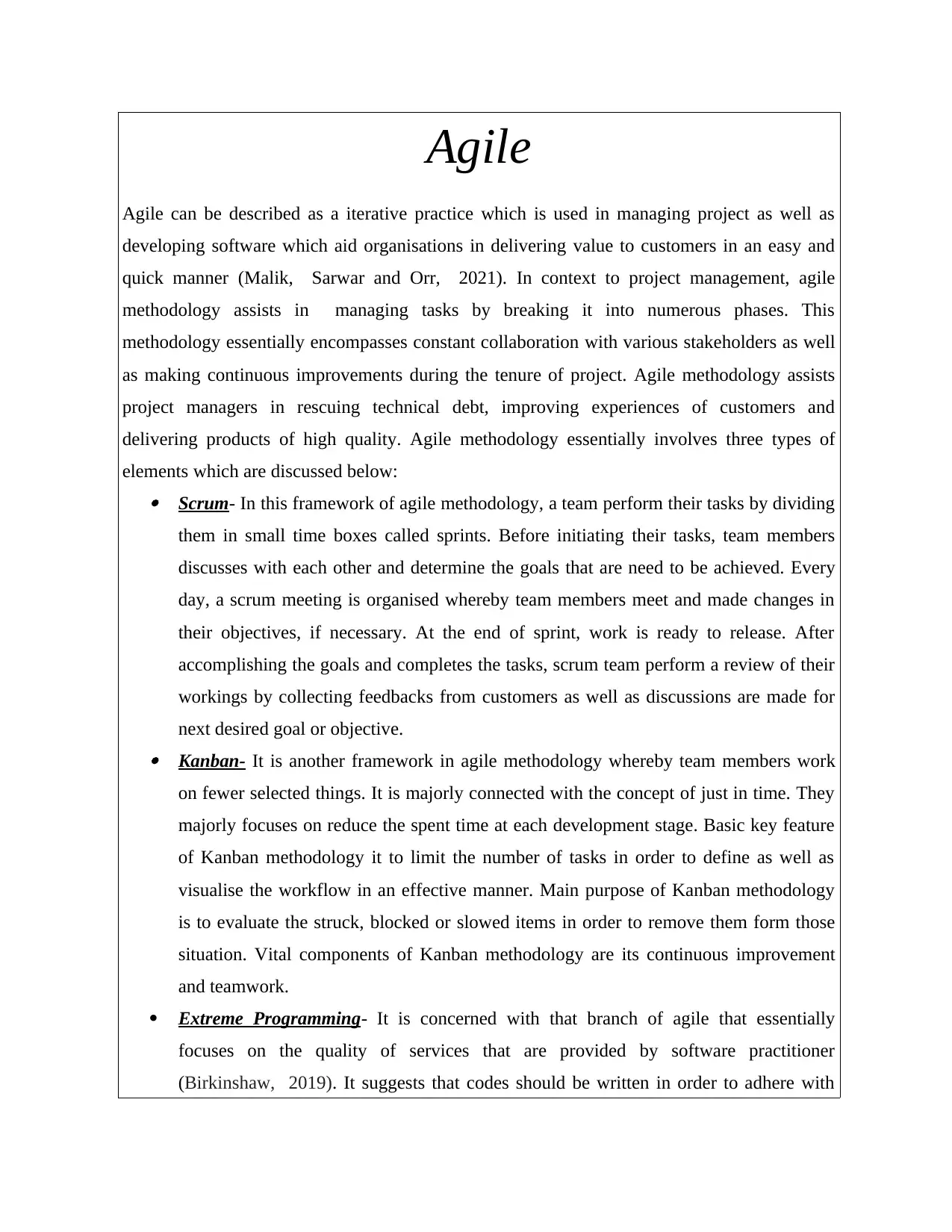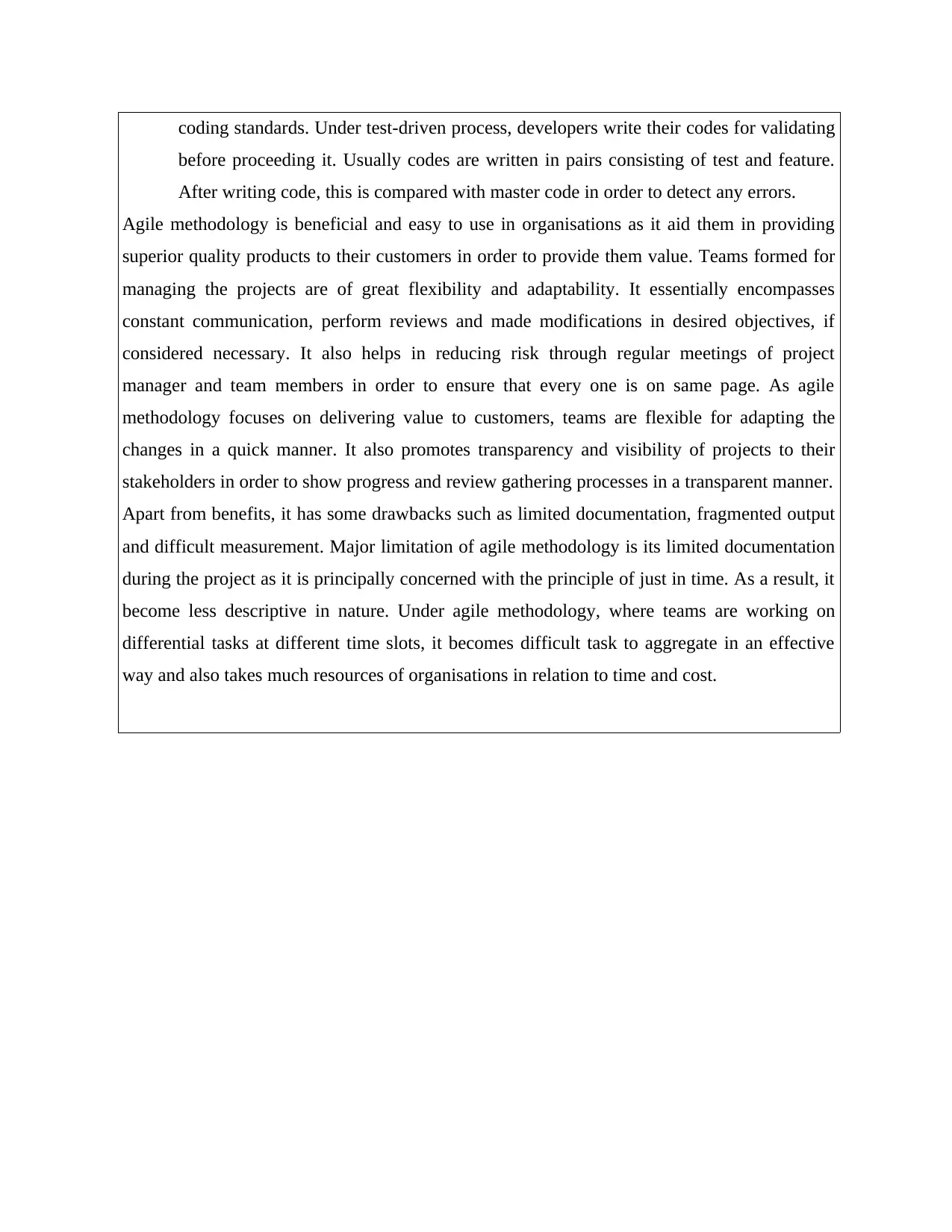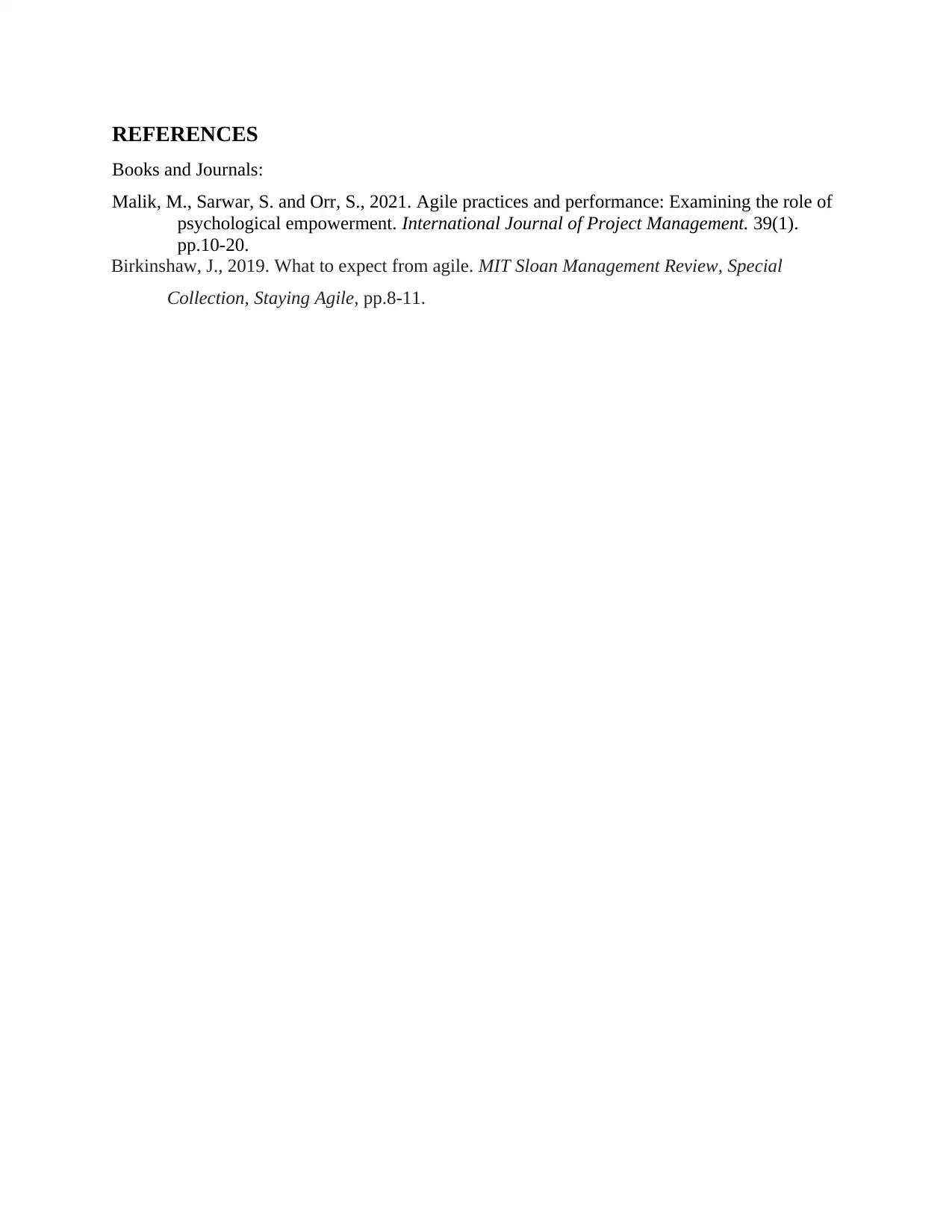A Detailed Analysis of Agile Methodology in Project Management
VerifiedAdded on 2023/06/11
|5
|741
|416
Essay
AI Summary
This article provides an overview of Agile methodology, an iterative approach used in project management and software development to deliver value to customers quickly. It discusses three key frameworks within Agile: Scrum, Kanban, and Extreme Programming. Scrum involves teams working in sprints with daily meetings, Kanban focuses on limiting tasks and visualizing workflow, and Extreme Programming emphasizes software quality through coding standards and test-driven development. The article highlights the benefits of Agile, such as flexibility, adaptability, and transparency, while also noting drawbacks like limited documentation and fragmented output. It concludes by referencing relevant books and journals that further explore Agile practices and their impact on project management performance.
1 out of 5









![[object Object]](/_next/static/media/star-bottom.7253800d.svg)